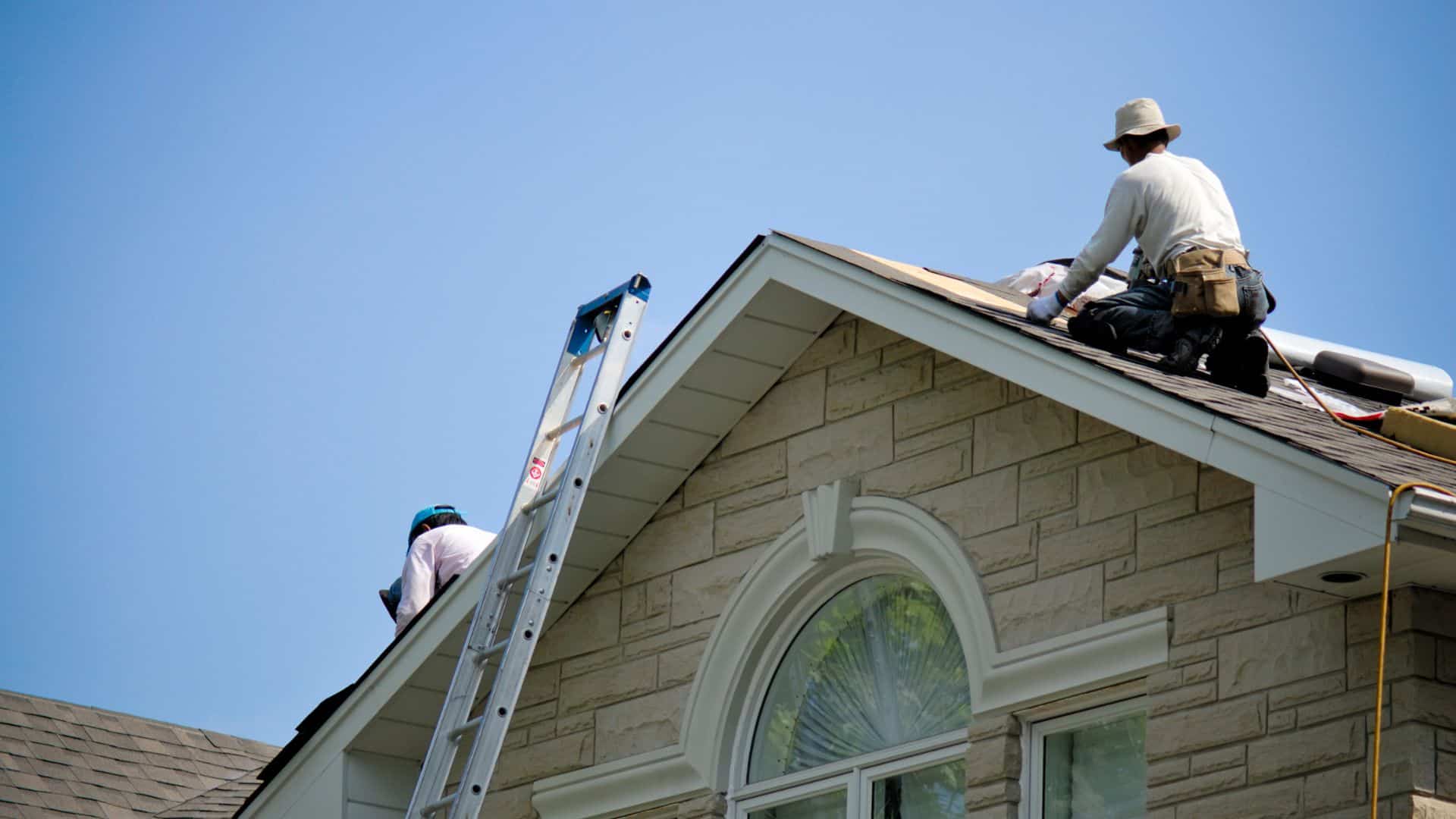You’re probably wondering how long your roof will last, right? Well, you’ve come to the right place. The lifespan of a roof can vary dramatically depending on several factors, including the type of material used, the quality of installation and maintenance, as well as environmental conditions.
Let’s take a journey together through this comprehensive guide where we’ll delve into the pros and cons of different roofing materials such as asphalt shingles, metal roofs, wood shingles, slate tiles, and concrete or clay tiles. We’ll explore their lifespans and understand what contributes to their longevity. Additionally, we’ll provide you with some handy tips on maintenance and care for prolonged use of your roof. Stick around – it’s going to be enlightening!
Determining Factors for Lifespan
You might be wondering, what exactly determines the lifespan of your roof? Well, it’s not just about the material you choose; factors like installation quality, maintenance, and climate also play crucial roles. The impact of climate can’t be understated. If your home is in an area that experiences harsh weather conditions like heavy snowfall or high temperatures, your roof may wear out faster than expected. Even regular exposure to strong sunlight can degrade some roofing materials over time.
The quality of the material chosen for your roofing also has a significant effect on its longevity. For instance, asphalt shingles might not last as long as metal or tile roofs due to their lower resistance to weather elements. Regular maintenance can significantly extend your roof’s life span – cleaning gutters, removing debris and moss from the surface are all part of this process. So don’t overlook these points when considering how long your roof will last!
Asphalt Shingles: Pros, Cons, and Longevity

Asphalt shingles, despite their widespread popularity, come with a set of advantages and drawbacks, along with a certain degree of longevity. One of the biggest pros is that they’re affordable and easy to install. Their versatility in terms of colors and styles also make them a favorite among homeowners aiming for aesthetic appeal. However, the lifespan of asphalt shingles can be impacted by installation techniques. A poor installation job could lead to premature wear-and-tear or damage that shortens the roof’s overall life expectancy.
On the flip side, one major con for asphalt shingles is their environmental impact; they account for a significant portion of construction waste each year. Fortunately, initiatives like shingle recycling are starting to help mitigate this problem by converting old shingles into materials for road construction or other uses. While asphalt shingles typically last about 20 years under ideal conditions, factors such as harsh weather conditions or improper installation can reduce this lifespan considerably. So if you’re considering this roofing material, ensure you find a reliable contractor who follows proper installation methods to maximize your roof’s longevity.
Metal Roofs: Advantages, Disadvantages, and Durability
Switching gears, let’s delve into the world of metal roofs, a choice that’s gaining popularity thanks to its remarkable durability and host of other benefits. Metal aesthetics are one major draw; this material offers a sleek, modern look that can be tailored to fit any architectural style. Plus, it’s available in a wide range of colors and finishes, from shiny copper to weathered steel. But beauty isn’t all metal has going for it. Its lifespan is impressive too—you can expect your metal roof to last anywhere between 40 to 70 years if properly maintained.
Now, let’s talk about cost comparison with other roofing materials. While the initial outlay for a metal roof may be higher than for asphalt shingles or tiles, keep in mind that its longevity and durability could make it more cost-effective in the long run. It requires less maintenance and is highly resistant to damage from elements like wind or hail—a big plus if you live in an area prone to severe weather conditions. So while you might shell out more upfront for a metal roof, you’ll likely save money over time because you won’t have as many repair costs or need a replacement as soon.
Examining the Longevity of Wood Shingles
Despite their undeniable charm and classic appeal, wood shingles unfortunately can’t match the staying power of their metal counterparts. Still, don’t be too quick to dismiss them. When it comes to aesthetics, wood shingles are hard to beat. They bring a natural beauty that adds character and sophistication to any home. The grain patterns, texture, and color variations make each roof unique, blending seamlessly with various architectural styles.
The longevity of your wooden roof depends largely on the quality of both the material used and its installation method. Shingle installation methods play a pivotal role in ensuring your roof stands up against harsh weather conditions while maintaining its aesthetic appeal over time. A professional roofer will use techniques like edge sealing to protect vulnerable areas from moisture infiltration which could lead to decay or warping over time. If appropriately installed and maintained well (like regular cleaning), wooden shingles can last anywhere between 20-30 years—a testament that beauty doesn’t always have to be fleeting!
The Lifespan of Slate Tiles
If you’re searching for a roofing option that combines ageless elegance with incredible durability, slate tiles should be on your radar. They are one of the longest-lasting roofing materials out there, with an impressive lifespan ranging from 75 to 200 years depending upon quality and maintenance. Slate’s longevity is largely due to its natural composition – it’s essentially rock! This also opens up exciting slate recycling possibilities when the time eventually comes for replacement or renovation.
Interestingly, regional slate variations can impact the material’s durability as well. The differences in mineral composition and density between slates sourced from different regions mean that some may resist weathering better than others. For example, Pennsylvania black slate is renowned for its exceptional longevity and resistance to harsh weather conditions. So while you’re choosing slate tiles, remember to consider where they’ve come from; it could make a significant difference in how long your roof lasts!
Concrete and Clay Tiles: Their Durability and Lifespan

You’re probably wondering just how sturdy concrete and clay tiles really are, right? Well, you’ll be pleased to know that these materials are renowned for their durability. Concrete and clay roofs can last anywhere between 50 to 100 years or even more with proper maintenance. Their lifespan is significantly longer than many other types of roofing materials available on the market. Not only do they provide a long-lasting roofing solution, but the tile aesthetics also add a touch of elegance and timeless beauty to your home.
Despite their longevity and appeal, it’s crucial to consider installation costs when deciding on concrete or clay tiles. These materials are considerably heavier than others like asphalt shingles or metal roofing, meaning they require additional support structures which can increase initial installation expenses. However, given their extended lifespan, lower maintenance needs over time, and potential energy savings due to their excellent insulation properties, these higher upfront costs could pay off in the long run. If you’re looking for a roof that combines strength with style, concrete and clay tiles might just be your perfect choice.
Maintenance and Care for Prolonged Use
Maintaining and caring for your concrete or clay tiles is essential to ensure they’re at their best for the longest possible time. You’ll need to regularly inspect them for cracks or other damages, especially after severe weather conditions. Seasonal effects can cause contraction and expansion in these materials leading to potential breakage if not addressed promptly. Proper insulation also plays a crucial role in prolonging the lifespan of your roof. A well-insulated roof helps regulate temperature fluctuations which, in turn, reduces the strain on your tiles.
In addition to regular inspections and proper insulation, it’s essential to keep your tiles clean as accumulated dirt and debris can lead to moisture build-up causing mold growth or eventual degradation of material over time. Also, remember that any necessary repairs should be carried out immediately by professionals who understand how different roofing materials react with various environmental factors. Taking these steps will go a long way in ensuring you get the most out of your investment while keeping your home protected for decades.
Conclusion
So, you’ve delved into the lifespans of various roofing materials. You now know that factors like material type, weather conditions and proper maintenance all play a crucial role in how long your roof will last.
Don’t forget, it’s your responsibility to care for your roof. Regular check-ups and timely repairs can extend its lifespan significantly. Choose wisely based on your needs and environment, because a well-maintained roof is an investment that pays off in the long run!














